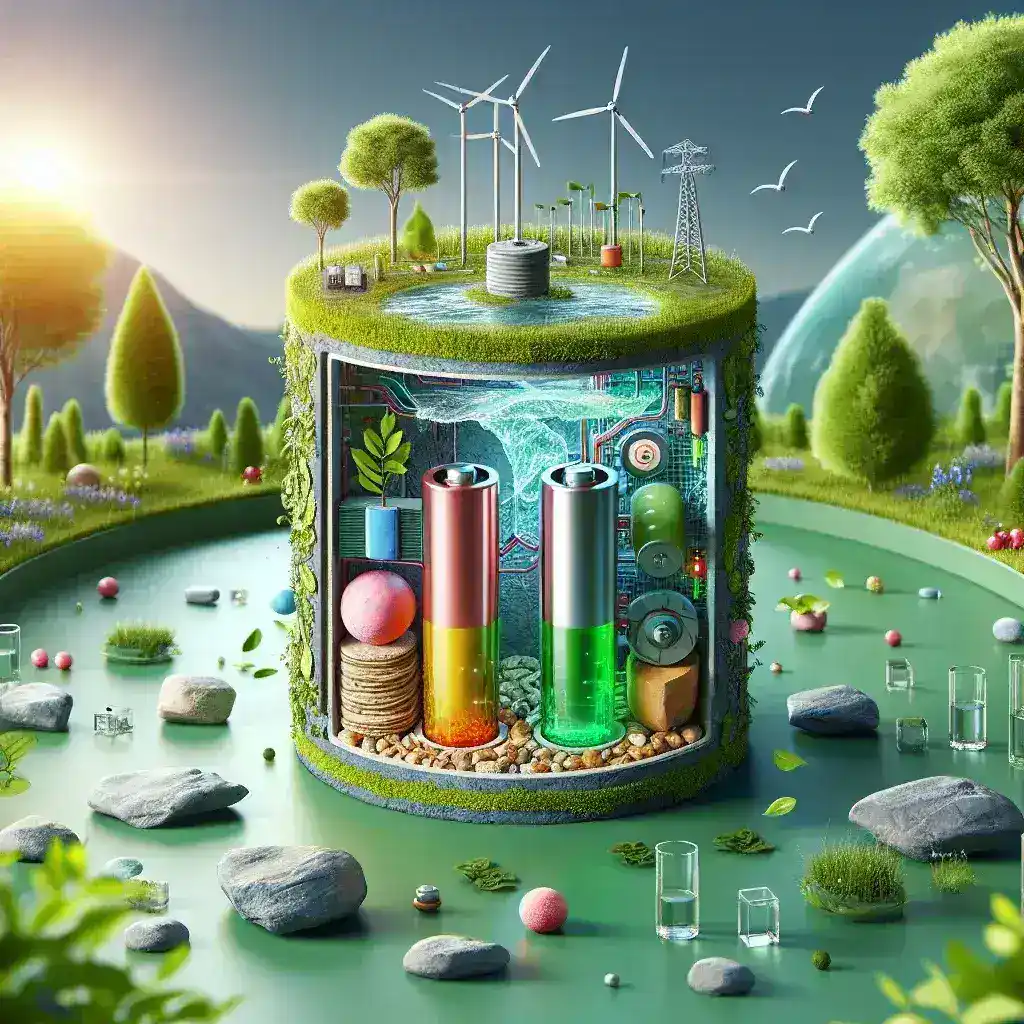Introduction to Biodegradable Batteries
As the world grapples with the implications of plastic waste and electronic pollution, the search for sustainable alternatives is becoming increasingly critical. In recent years, researchers have made significant strides in the field of biodegradable batteries. This article delves into the emergence of a new type of biodegradable battery developed from organic materials, exploring its potential benefits and challenges.
The Science Behind Biodegradable Batteries
Biodegradable batteries are designed to break down naturally in the environment, mitigating the harmful effects associated with traditional batteries. Unlike conventional batteries, which often contain toxic metals and materials that can leach into the soil, biodegradable options are composed of organic substances that decompose without leaving harmful residues.
How Are They Made?
The production of biodegradable batteries involves the use of materials like cellulose, chitosan, and other organic polymers. These materials can be sourced from natural waste products, making the production process not only sustainable but also economically viable.
Key Components
- Electrolytes: Derived from organic compounds that can conduct electricity.
- Conductive materials: Utilized to ensure efficient electron flow.
- Binders: Help to hold the components together while allowing for degradation over time.
Benefits of Biodegradable Batteries
The development of biodegradable batteries represents a significant advancement in our efforts to create sustainable technologies. Here are some of the key benefits:
1. Environmental Impact
One of the most compelling reasons for the shift to biodegradable batteries is their reduced environmental footprint. As these batteries decompose, they do not emit harmful pollutants, making them safer for ecosystems.
2. Resource Efficiency
Biodegradable batteries can be made from abundant and renewable resources, reducing our reliance on finite materials required for traditional batteries.
3. Waste Reduction
By using materials that can naturally decompose, we can significantly decrease the amount of electronic waste that ends up in landfills.
Challenges Ahead
Despite the promising advantages, several challenges remain in the widespread adoption of biodegradable batteries.
1. Performance Limitations
Currently, many biodegradable batteries do not match the performance of traditional lithium-ion batteries in terms of energy density and lifespan.
2. Cost of Production
As with any emerging technology, the cost of producing biodegradable batteries can be higher than their conventional counterparts, which may deter manufacturers from making the switch.
3. Consumer Awareness
Consumers need to be educated about the benefits of biodegradable batteries and how to properly dispose of them to maximize their environmental advantages.
Future Predictions
As technology continues to advance, we can expect significant improvements in the efficiency and effectiveness of biodegradable batteries. Experts predict that:
- The energy density of biodegradable batteries will increase, allowing them to compete more effectively with traditional options.
- Costs will decrease as production methods become more refined and scaled up.
- Consumer awareness campaigns will educate the public about sustainable battery options, driving demand.
Real-World Applications
Biodegradable batteries could find their way into various applications:
1. Consumer Electronics
With the increasing number of electronic devices, biodegradable batteries could provide a sustainable power source for gadgets such as smartphones and wearables.
2. Medical Devices
In the medical field, biodegradable batteries could be used in implantable devices, reducing the need for surgical removal after the device’s life cycle.
3. Environmental Monitoring
These batteries can power sensors deployed in sensitive ecosystems, helping researchers monitor environmental health without adding to pollution.
Cultural Relevance
The development of biodegradable batteries is not just a technological innovation; it’s a cultural shift towards sustainability. As more consumers prioritize eco-friendly choices, companies are increasingly held accountable for their environmental impact. This trend can be seen in various industries, from fashion to technology.
Statistics and Expert Insights
According to recent studies, the global market for biodegradable batteries is expected to grow by over 20% annually as more companies invest in sustainable technologies. Experts suggest that the future of energy storage lies in the integration of biodegradable materials, paving the way for a more sustainable energy landscape.
Conclusion
The development of biodegradable batteries from organic materials represents a significant leap towards sustainable energy solutions. While challenges remain, the potential benefits for the environment and society are immense. As technology advances and consumer awareness grows, we may soon find biodegradable batteries becoming a standard choice for powering our devices. The time for a sustainable revolution in battery technology is now.
